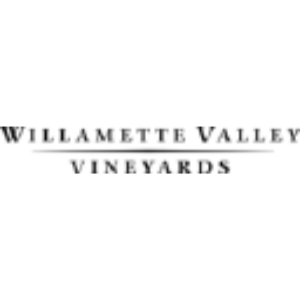Welcome to our dedicated page for Willamette Vy Vineyard news (Ticker: WVVI), a resource for investors and traders seeking the latest updates and insights on Willamette Vy Vineyard stock.
Willamette Valley Vineyards Inc (WVVI) delivers premium wines through integrated vineyard operations and a multi-brand strategy. This page provides investors and industry observers with direct access to official company announcements, financial disclosures, and operational developments.
As a centralized resource for WVVI updates, users will find curated press releases, earnings reports, and news about product launches or vineyard expansions. The collection emphasizes timely, factual information to support analysis of the company’s market position and growth initiatives.
Key categories include financial performance updates, new wine varietal releases, sustainability initiatives, and hospitality program developments. All content is sourced from verified company communications to ensure accuracy and relevance.
Bookmark this page for streamlined access to WVVI’s latest developments. Check back regularly for updates on Oregon wine industry leadership and the company’s dual-channel distribution strategy.
Willamette Valley Vineyards (NASDAQ: WVVI), a leading Oregon Pinot Noir producer, reported its 2024 financial results. The company reduced its loss per common share after preferred dividends to $0.48 in 2024 from $0.65 in 2023, marking a 26.0% improvement.
Key financial highlights include:
- Net sales increased 1.7% to $39.78 million in 2024
- Direct sales revenue grew 3.6%, while distributor sales decreased 0.5%
- Gross profit rose 7.3% to $24.20 million
- Selling, general and administrative expenses decreased 0.6% to $23.62 million
- Income from operations improved to $571,858 in 2024 from a loss of $1.21 million in 2023
CEO Jim Bernau noted that despite declining industry sales trends, the company expects to benefit from its recently established retail locations as operations mature, emphasizing their unique wine enthusiast ownership strategy for long-term shareholder value.
Willamette Valley Vineyards (NASDAQ: WVVI) reported Q3 2024 results with a loss per share of $0.17, unchanged from Q3 2023. Sales revenue slightly increased by 0.2% to $9.37 million, driven by a $245,797 increase in direct sales from a new tasting room, offset by a $223,150 decrease in distributor sales. Gross profit margin improved to 62.0% from 60.8%. Operating expenses decreased by 0.4% to $5.94 million. Net loss improved by 13.5% to $282,945 compared to $326,982 in Q3 2023. The company faces challenges from wholesalers and retailers reducing wine inventories amid market pressures.
Willamette Valley Vineyards (NASDAQ:WVVI), an Oregon-based Pinot Noir producer, has announced a cash dividend of $0.22 per share on its Series A Redeemable Preferred stock (NASDAQ:WVVIP). The dividend will be paid on December 31, 2024, to shareholders of record as of December 6, 2024. Future dividend payments will require board approval and will be determined according to the terms outlined in the Amended and Restated Certificate of Designation for the Series A Redeemable Preferred Stock.
Willamette Valley Vineyards (NASDAQ: WVVI) reported Q2 2024 results, showing a slight improvement in loss per common share after preferred dividends, decreasing from $0.08 to $0.07 compared to Q2 2023. Sales revenue decreased by 3.7% to $10,332,358, primarily due to lower distributor sales, partially offset by increased direct sales from a new tasting room. Gross profit margin improved by 4.3 percentage points to 62.6%, driven by higher product prices. Net income increased by 80.7% to $195,978, mainly due to higher pricing. The company faces challenges from changing market conditions, including reduced wine inventories and shelf space reallocation by wholesalers and retailers.
Willamette Valley Vineyards (NASDAQ: WVVI) reported results for Q1 2024. The company posted a net loss of $521,805, a 29.9% improvement from the $744,823 loss in Q1 2023. Loss per common share decreased from $0.25 to $0.22. Revenues increased by 5.9% to $8.8 million, driven by higher direct sales and distributor shipments. Gross profit rose by 17.7% to $5.27 million. However, selling, general, and administrative expenses increased by 7.7%, mainly due to higher legal costs and an additional tasting room. Despite these expenses, the company managed to reduce net losses through higher product prices.

